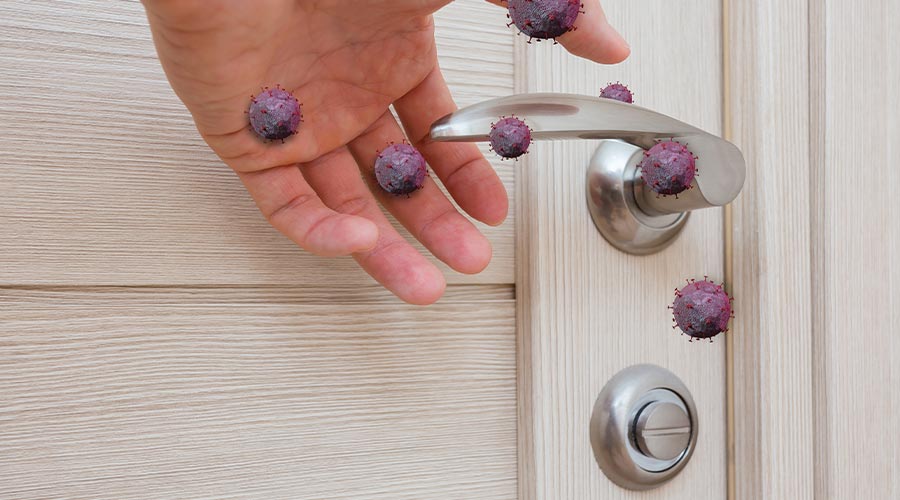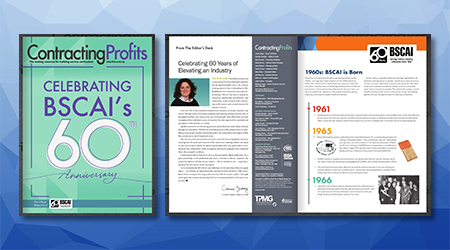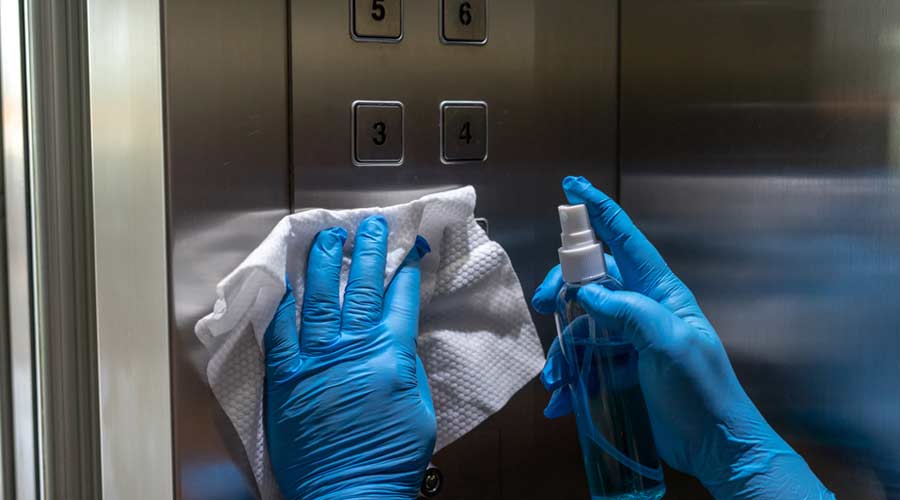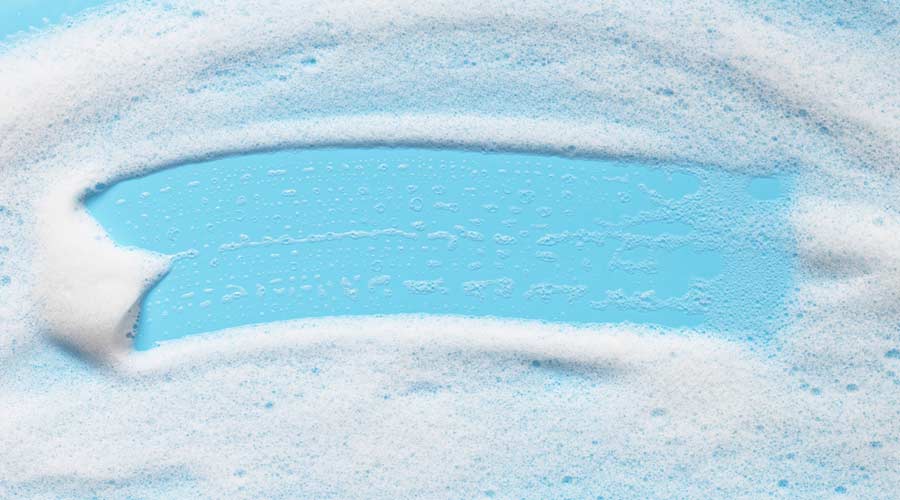
Cold and flu season is here. More than uncomfortable or inconvenient, these infections come with big — and expensive — side effects. The flu costs U.S. businesses about $11.5 billion each year in direct and indirect costs, while the common cold/influenza tops out at $25 billion every year. These viruses are no joke. The illnesses may cause severe complications, including death.
Facility cleaning managers and their staff can help prevent the spread of these unpleasant viruses, but only if they know how to break what the National Institute for Occupational Safety and Health (NIOSH) calls the chain of infection. This involves an understanding of how both the cold and flu viruses spread through a facility, and the best preventative practices.
J. Darrel Hicks, owner of St. Louis-based Safe, Clean, and Disinfected, blames a culture of presenteeism that encourages ill employees to power through their workday for fear of losing pay or outright getting fired for spreading germs. Although to be fair, oftentimes people show up because they do not yet know they are sick with a respiratory infection or diarrhea because they have no symptoms…yet. Once the coughing, sneezing, and flushing starts, it spews germs and viruses into the air for others to inhale. Eventually, pathogens settle on surfaces and survive for varying degrees of time, waiting to be transferred by touch. Germs and viruses can also blow through open doors and windows, hitching a ride on dust or the bottoms of shoes. Once in the air, they spread through poorly maintained ventilation systems, and then it’s game on.
“Some bacteria can reproduce quickly and rapidly double in number under optimal conditions,” says Roger McFadden, chief science officer, McFadden and Associates, LLC, Portland, Oregon. “For example, E. coli can spread rapidly in warm environments. Viruses like the flu or COVID-19 can also spread quickly, especially through respiratory droplets. Fungi like mold can be transmitted through the air or by direct contact.”
Contamination is so simple that even just going about a regular workday is enough to spread germs.
“Touching contaminated surfaces are probably the major source of transfer, although sneezes and flushing toilets are other routes of exposure,” says Dr. Charles Gerba, professor of virology in the Department of Environmental Science at the University of Arizona in Tucson.
Gerba references tracer studies that found “the coffee breakroom seems to be the place where germs and gossip are both spread. In our studies the coffee pot handle is the first item that seems to get contaminated in the office, also any tabletop and a sponge left for cleanups.The tabletop in a conference room also tends to be another hotspot, probably because of the number of people in the room at the same time.”
According to Gerba’s research, it only takes about four hours for germs to spread from high-touch surfaces to other parts of a facility.
The Frontline of Germ Control
Knowing how germs spread is great baseline information for a janitorial staff. It allows them to focus energy and resources on removing pathogens from common touchpoints that become hotspots for viruses and bacteria. This practice will go a long way toward protecting occupants.
Those hotspots start right at the front door, particularly the doorknob, handle or push plate. Staff should also focus on other spots people commonly touch, like light switches, elevator buttons, and handrails, particularly if there are reports of many illnesses.
Restrooms are another important area of focus. Again, staff should focus on high-touch points such as toilet flushers, sink taps, and light switches. But don’t forget the actual toilet and floor. Thanks to the dreaded toilet plume, aerosolized pathogens from bowl water can spread viruses everywhere.
Because germs and pathogens will hitch a ride on dust particles, dusting is also important when cleaning to prevent illness. Make sure staff seek out dust everywhere.
“Frontline workers can have an out of sight, out of mind mentality when it comes to dust,” says Hicks. “But they need to take care of high dusting, especially ceiling vents.”
As far as how often to clean, “The frequency of cleaning should be proportional to the infection risk,” says Dr. Ben Tanner, president and CEO, Microchem Laboratory, Round Rock, Texas. “If people are suspected to be ill, the frequency of cleaning should be triple versus when people are not sick.”
McFadden recommends cleaning high traffic areas like lobbies, break rooms, and restrooms daily. Offices, conference rooms, and other less frequently used areas can be cleaned weekly. Spills and visibly dirty surfaces should be serviced as needed.
Facility cleaning managers should also ensure their staff understands the difference between cleaning, sanitizing, and disinfecting. Unfortunately, a misunderstanding of the three is pervasive throughout the entire cleaning industry.
“Cleaning does not kill germs but does reduce their numbers,” explains McFadden. “Sanitizing reduces the number of germs on surfaces to a safe level, as determined by public health standards. Disinfection is the process of using chemicals to kill germs on surfaces.”
According to the experts, sanitizing should be reserved only for certain occasions, prioritizing cleaning and disinfecting instead.
“I’m not a huge fan of sanitizing,” admits Hicks. “But it is useful in food prep areas and childcare settings.”
Experts also caution against overusing disinfectants, as that comes with its own set of risks. Using too much is costly and can overexpose occupants and cleaning staff.
“Breathing in some disinfectants over a 20-year cleaning career is like smoking a pack of cigarettes a day,” says Hicks. “Lung damage can be phenomenal. You want to put the safest product in your staffs’ hands.”
He recommends choosing a product that acts quickly, so the dry time equals the prescribed dwell time.
“There are 10,000 disinfectants available today, but I only recommend about half a dozen,” Hicks says.
Tanner also points to the irony that, during cold and flu season, air interventions probably offer a better safety measure. He also notes that frequency of disinfection is more important than the strength of the disinfecting product. Because human error practically guarantees that staff will not properly disinfect every part of a surface, Tanner is a fan of using UV light for the task because it will consistently cover surfaces.
Cleaning Process Perfection Stops Infections

 Celebrating BSCAI's 60th Anniversary eBook
Celebrating BSCAI's 60th Anniversary eBook The Down and Dirty on Cleaning in Virus Season
The Down and Dirty on Cleaning in Virus Season How Surfactant Use is Expanding in Commercial Cleaning
How Surfactant Use is Expanding in Commercial Cleaning